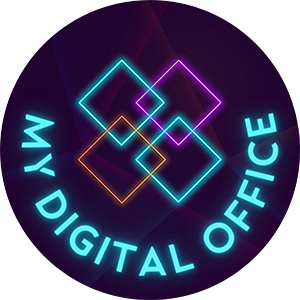A recent study reveals some interesting preferences that employees hold about work-from-home culture. In the upcoming year, 51% of hybrid workers say they will consider switching to a remote position, while 57% of remote employees claim they would like to convert to the hybrid work setting.
Overwhelmingly, over 50% of bosses want people back in the office, covering the usual nine to five schedule.
Are these the signals that remote/hybrid setup is not working out for everybody?
This article breaks down the issues of hybrid and remote working practices, addressing common concerns related to productivity and feasibility in the current economic landscape.
So, let’s get started, shall we?
Tension Over Working-From-Home Productivity
Effective and productive remote work depends on various factors, notably physical, spatial, and interpersonal context.
On the practical level, specific jobs are entirely out of the equation when it comes to remote working—so, no, the remote model is not for everybody.
Only about 37% of occupations can be performed from home, with the most suitable industries being computing, education, legal, financial, management, and administration. If we look deeper into these groups of employees, we can draw some relatively accurate conclusions—the majority of the workforce prefers remote.
The Crystal Clear Advantages of Remote and Hybrid Working
Working from the comfort of home, a café, or even a foreign country appeals to many. It allows you to manage home responsibilities better, reduce commuting time, and in some cases, improve mental health.
For most employees, working from home also means being more productive, as unlike in the traditional workplace, you are not exposed to distractions and office chit-chat.
But it doesn’t work for everybody.
Barriers to Effective Work From Home
Home is not a distraction-free space, and it’s relatively easy to slip into other activities, such as child care, errands, a quick trip to the supermarket, or an appointment at the hair salon. Consequently, people might find it challenging to self-motivate and prioritise effectively.
In addition, communication with other team members and managers can also be tricky due to the lack of appropriate, real-time tools.
Finally, isolation and loneliness can gradually creep in, as remote staff have fewer opportunities to interact with their work-from-home colleagues or their office counterparts. In addition, they have limited or no time to touch base with their managers, which further increases disengagement.
The Majority of Managers Still Don’t Buy Into the Idea
There is a broad agreement among managers that although some tasks could be completed remotely during a crisis, such as the pandemic, they can be done much more effectively in person.
Think about new employee onboarding. When recruits can’t meet their colleagues face-to-face and interact with them daily, fostering a sense of belonging and trust can be challenging.
However, remote leaders are mainly under siege due to the inability to effectively monitor employee productivity, which they attribute to the decrease in performance among some workers. It’s easier to see what your team is doing in the office, but doing so in a virtual setting is challenging without the appropriate tools.
On the other hand, leading a remote-based team in comparison to the office counterpart requires a lot of new skills and confidence. Do managers have access to the support they need? In reality, they rarely do.
What Can Be Done?
Ultimately, the question stands: should we return to physical offices or address digital working challenges?
There is no right or wrong answer, but the tendencies are clear.
Consider Cost-Benefit Analysis of Remote vs Office Work
In the light of rising energy and real estate costs, how sustainable is it to maintain physical office space? Is it morally right to ask people to commute with petrol prices breaking records? But what if bringing employees back to physical offices may be the only way to ensure productivity?
The truth is that businesses must decide for themselves what long-term strategy they want to pursue. They can leverage the uprise in virtual work to their advantage, i.e. investing in digital office solutions and management training, adopting a digital-first mentality and becoming an attractive employer.
Or…
They can return to doing business the old ways (with the office full of employees). This does come with challenges, such as high overheads, lack of market competitiveness, and workers jumping ships as they prefer remote to on-site.
Bridge The Communication Gaps
Ultimately, the main problems with remote working and employee performance seem to stem from ineffective communication.
Understandably, it’s difficult to maintain efficient feedback channels and build informal relationships when workers don’t see each other in person.
However, if companies can break the barriers of remote communication, they will be able to build highly productive and dedicated teams.
Investing in appropriate digital infrastructure is not about tapping into the telecommunication tools used at the pandemic’s peak. We must acknowledge that while they performed admirably in a crisis, they cannot support organisations of the future generation.
Why Metaverse for Work Could Be The Answer
Indeed, working from home is not for everybody, as employees and managers face a steep learning curve and a lack of support to thrive in the virtual workplace.
Despite the overwhelming benefits of flexible working, the performance of virtual workers yet again draws attention. Nevertheless, telling people to return to the offices seems like a regressive step. Remote work is inevitable, so think about confronting it rather than finding ways to avoid it.
There’s evidently some work to be done on both parts—leaders need to let go of presenteeism while workers must work on techniques to minimise distractions and focus on personal productivity.
Our immersive features-rich solution, My Digital Office, can become the enabler of virtual work that is productive, collaborative, engaging, and visible.
Your organisation can be remote-fit—you just need the right tools!
Check Out My Digital Office Completely Free.

